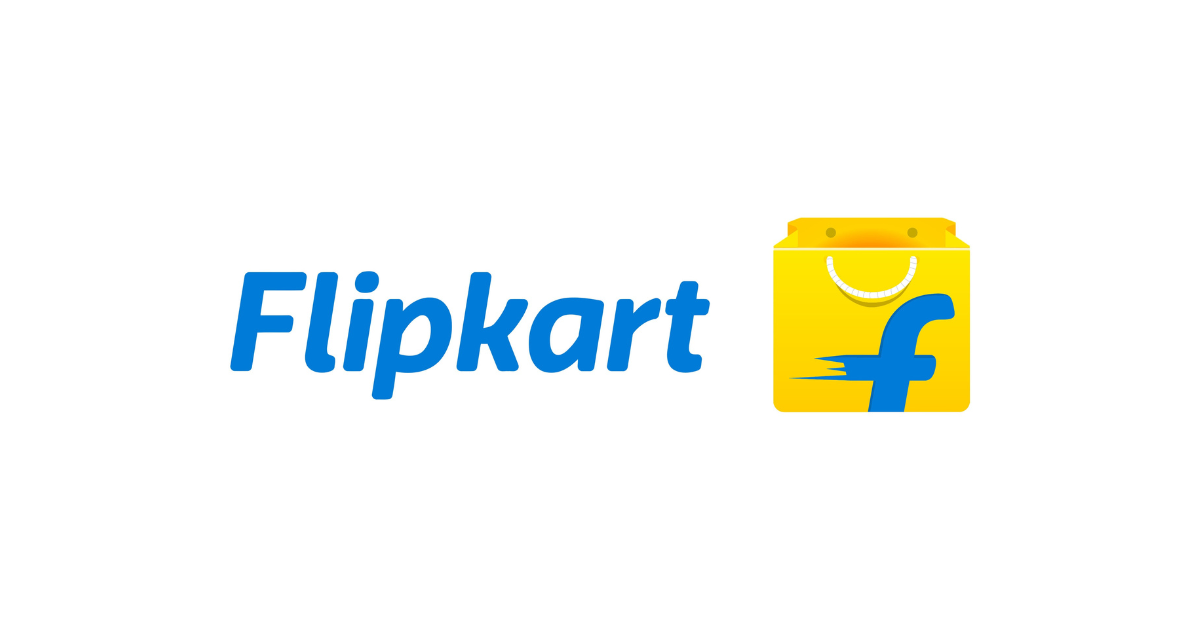Flipkart is one of India’s largest e-commerce platforms, founded in 2007 by Sachin Bansal and Binny Bansal. Initially started as an online bookstore, the company quickly expanded its offerings to include electronics, fashion, home goods, and groceries, among other categories. Headquartered in Bangalore, Flipkart has revolutionized the way people shop in India, providing a wide range of products and services through its website and mobile app. Known for its innovative marketplace model, Flipkart allows third-party sellers to list products, and its logistics arm, Ekart, ensures fast delivery across the country. With significant investments from major players like Walmart, Flipkart has become a market leader in the Indian e-commerce sector, competing with global giants like Amazon. Through its commitment to customer service, technology, and continuous innovation, Flipkart has transformed online shopping in India and remains a key player in the retail industry.
Company Information
Company Name: Flipkart
Founder Name: Sachin Bansal and Binny Bansal
Founded Year: 2007
Headquarters: Bangalore, Karnataka, India
Products:
- Electronics
- Clothing & Apparel
- Home Appliances
- Books
- Groceries
- Furniture
- Personal Care Products
- Sports Equipment
Services:
- Online Shopping Portal
- Flipkart Plus (loyalty program)
- Flipkart Payments
- Flipkart Logistics
- Flipkart Advertising
- Flipkart Wholesale
Competitors:
- Amazon India
- Snapdeal
- Myntra
- BigBasket
- Reliance Digital
- Paytm Mall
- ShopClues
- Lenskart
- Tata CLiQ
- Ajio
Company History & Growth:
- The Beginning of Flipkart:
- In 2007, Sachin Bansal and Binny Bansal, both former Amazon employees, founded Flipkart with a vision to revolutionize online shopping in India. Initially, Flipkart started as an online bookstore, with a mission to make books accessible to Indian consumers.
- Expansion to Other Product Categories:
- Within a few years, Flipkart diversified its offerings, adding electronics, home goods, fashion, and more to its inventory. This shift helped attract a wider customer base and build brand recognition across the country.
- Launch of Flipkart’s Marketplace Model:
- In 2010, Flipkart introduced its marketplace model, allowing third-party sellers to list their products on the platform. This move helped expand product variety and accelerated Flipkart’s growth by adding multiple categories to its offering.
- Funding and Investment:
- Flipkart raised significant capital from investors such as Tiger Global, Accel Partners, and Naspers. These funds were used for expanding operations, improving technology, and enhancing marketing strategies.
- Acquisition of Myntra:
- In 2014, Flipkart acquired Myntra, a leading online fashion retailer, which allowed Flipkart to strengthen its position in the rapidly growing e-commerce fashion segment.
- Launch of Flipkart Payments and Logistics:
- Flipkart introduced Flipkart Payments to simplify transactions and introduced its own logistics arm, Ekart, to manage delivery and ensure faster service across India.
- Strategic Partnerships and Market Leadership:
- In 2018, Flipkart’s strategic partnerships, including collaborations with Walmart, helped further establish its dominance in the Indian e-commerce market. Walmart acquired a controlling stake in Flipkart, making it one of the most valuable e-commerce companies in India.
- Continued Innovation:
- Flipkart continued to innovate by enhancing its technology stack, introducing AI-powered recommendations, improving its mobile app, and launching new services like Flipkart Wholesale, which focuses on B2B sales.
Challenges & Lessons:
- Competition from Amazon:
- Flipkart faced intense competition from Amazon India. The challenge of retaining market share led Flipkart to invest heavily in customer acquisition, delivery infrastructure, and user experience. The lesson here is to continuously innovate to stay ahead in a competitive market.
- Logistical Challenges in India:
- Managing logistics in India, a vast and diverse country, was a significant challenge, especially when it came to rural areas. Flipkart built a strong logistics network, Ekart, to overcome this challenge. The lesson is the importance of investing in infrastructure and technology to solve logistical problems.
- Adapting to Changing Consumer Preferences:
- As consumer preferences shifted towards mobile-first shopping, Flipkart had to quickly adapt its platform for mobile users. It worked on enhancing mobile app functionality and improving customer service. Entrepreneurs should always stay aligned with customer needs and trends.
- Regulatory Challenges:
- Being an e-commerce platform, Flipkart had to navigate regulatory hurdles, especially when it came to foreign investment laws and taxation policies. Understanding and adapting to government regulations is crucial for sustained growth.
Innovations:
- Flipkart’s Marketplace Model:
- By creating a marketplace for third-party sellers, Flipkart expanded its inventory without taking on excessive inventory costs. This model allowed rapid scaling with minimal risk.
- AI-Powered Personalization:
- Flipkart uses artificial intelligence and machine learning to offer personalized recommendations, making the shopping experience more relevant for customers.
- Flipkart Plus:
- A loyalty program similar to Amazon Prime, offering benefits such as free shipping, early access to sales, and exclusive offers.
- Flipkart Video:
- Flipkart launched its own video content platform, Flipkart Video, catering to entertainment and lifestyle content for consumers.
- Voice Search and Chatbots:
- Flipkart integrated voice search technology and chatbots for customer support, improving the shopping experience for users who prefer non-textual forms of interaction.
Achievements or Milestones:
- Walmart’s Investment:
- In 2018, Walmart invested $16 billion to acquire a 77% stake in Flipkart, one of the largest e-commerce investments in India.
- One of India’s Largest E-Commerce Platforms:
- Flipkart became one of the largest e-commerce companies in India, with millions of users across the country.
- Expansion into New Markets:
- Flipkart expanded its services beyond India, entering other South Asian markets and growing its footprint in new regions.
- Flipkart’s 1 Billion App Downloads:
- The Flipkart mobile app crossed 1 billion downloads, marking a significant achievement in user engagement.
- Flipkart’s Annual Sale Events:
- The company’s annual sale events, like Big Billion Days, became an iconic part of Indian e-commerce, drawing millions of customers and driving massive sales.
Recognitions & Awards:
- Best E-Commerce Platform:
- Flipkart has received numerous awards for being the best e-commerce platform in India, including accolades for customer service, mobile experience, and innovation.
- ET Now – Most Valuable Start-Up in India (2018):
- In 2018, Flipkart was named the most valuable startup in India by ET Now, following Walmart’s acquisition.
- LinkedIn Top Companies India:
- Flipkart was featured multiple times on LinkedIn’s list of “Top Companies to Work For” in India due to its strong work culture and growth.
Recap of the Company’s Success Story and Achievements:
Flipkart’s journey from a small online bookstore to one of India’s largest and most successful e-commerce giants is nothing short of remarkable. Founded by Sachin and Binny Bansal in 2007, the company overcame numerous challenges, including fierce competition, complex logistics, and regulatory hurdles. Flipkart’s innovative approach to e-commerce, including its marketplace model, loyalty programs, and AI-powered shopping experience, helped it scale rapidly. The strategic acquisition of Myntra, partnerships with Walmart, and continued technological advancements further solidified Flipkart’s position as a market leader. With millions of loyal customers, billions of app downloads, and a series of significant milestones, Flipkart’s story showcases the importance of adapting to market demands, focusing on customer experience, and continuously innovating to maintain leadership.
What Entrepreneurs Can Learn From This Company’s Success Story:
Entrepreneurs can take several valuable lessons from Flipkart’s success. First, the importance of identifying market gaps and seizing opportunities cannot be overstated. Flipkart recognized the potential of online shopping in India early on, focusing on making products like books more accessible to a growing internet-savvy audience. Second, innovation is key to staying ahead of the competition. Flipkart’s constant introduction of new services, such as its marketplace model and Flipkart Plus program, helped it build customer loyalty and expand its offerings. Third, a focus on solving challenges, like logistics and customer preferences, ensures sustained growth. Finally, entrepreneurs should be prepared to pivot and adapt as necessary, especially when facing competitive pressures or market shifts. Flipkart’s ability to adapt to changing technologies and customer behaviors, while maintaining a strong brand identity, is a testament to its success.



